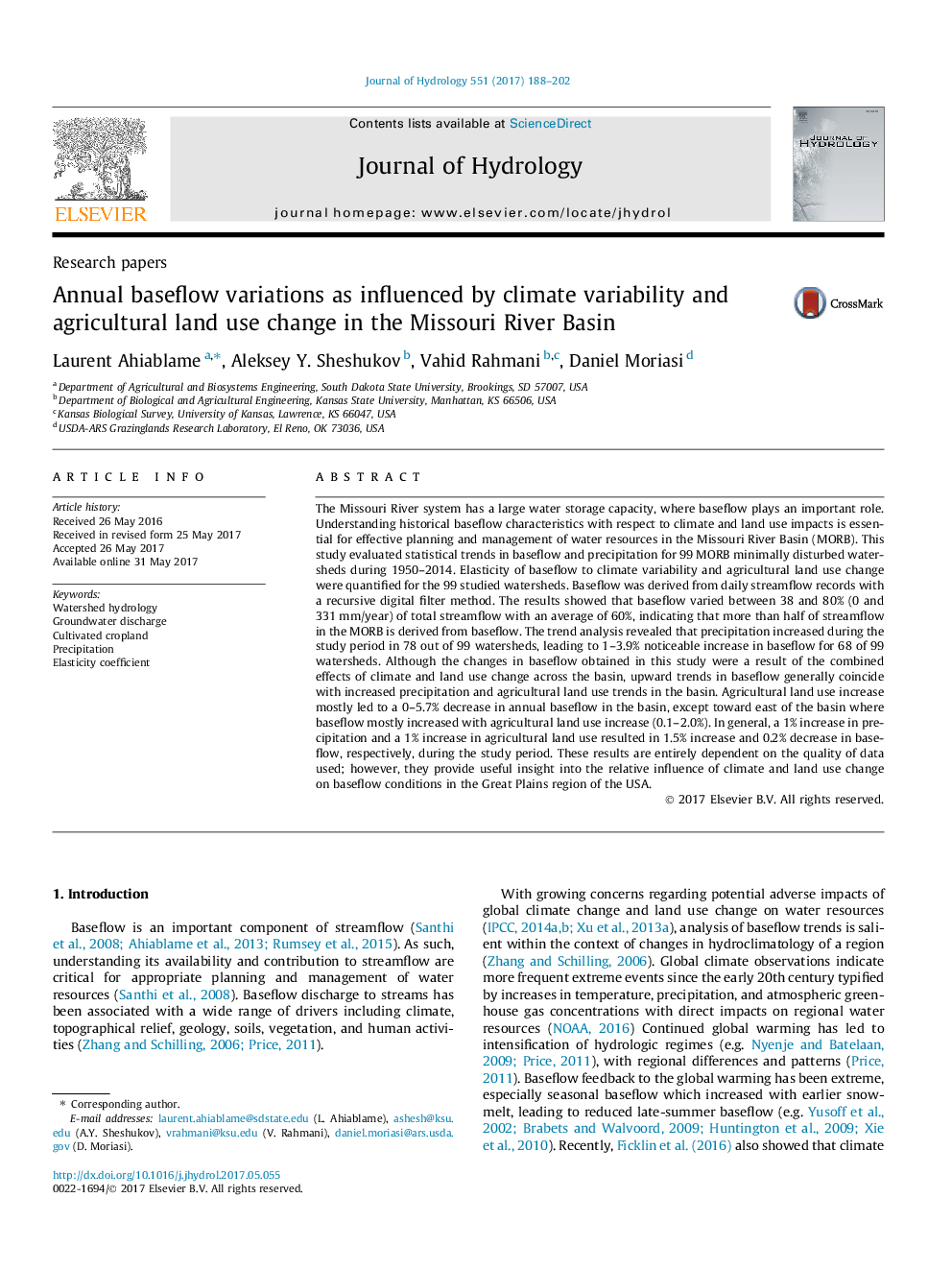| کد مقاله | کد نشریه | سال انتشار | مقاله انگلیسی | نسخه تمام متن |
|---|---|---|---|---|
| 5770895 | 1629903 | 2017 | 15 صفحه PDF | دانلود رایگان |
• Precipitation and land use influences on annual baseflow are evaluated.
• Baseflow shows more upward than downward trends in the basin.
• Baseflow increases with a magnitude of 1.5% for a 1% increase in precipitation.
• Baseflow decreases by 0.2% for a 1% increase in agricultural land use.
The Missouri River system has a large water storage capacity, where baseflow plays an important role. Understanding historical baseflow characteristics with respect to climate and land use impacts is essential for effective planning and management of water resources in the Missouri River Basin (MORB). This study evaluated statistical trends in baseflow and precipitation for 99 MORB minimally disturbed watersheds during 1950–2014. Elasticity of baseflow to climate variability and agricultural land use change were quantified for the 99 studied watersheds. Baseflow was derived from daily streamflow records with a recursive digital filter method. The results showed that baseflow varied between 38 and 80% (0 and 331 mm/year) of total streamflow with an average of 60%, indicating that more than half of streamflow in the MORB is derived from baseflow. The trend analysis revealed that precipitation increased during the study period in 78 out of 99 watersheds, leading to 1–3.9% noticeable increase in baseflow for 68 of 99 watersheds. Although the changes in baseflow obtained in this study were a result of the combined effects of climate and land use change across the basin, upward trends in baseflow generally coincide with increased precipitation and agricultural land use trends in the basin. Agricultural land use increase mostly led to a 0–5.7% decrease in annual baseflow in the basin, except toward east of the basin where baseflow mostly increased with agricultural land use increase (0.1–2.0%). In general, a 1% increase in precipitation and a 1% increase in agricultural land use resulted in 1.5% increase and 0.2% decrease in baseflow, respectively, during the study period. These results are entirely dependent on the quality of data used; however, they provide useful insight into the relative influence of climate and land use change on baseflow conditions in the Great Plains region of the USA.
Journal: Journal of Hydrology - Volume 551, August 2017, Pages 188–202
